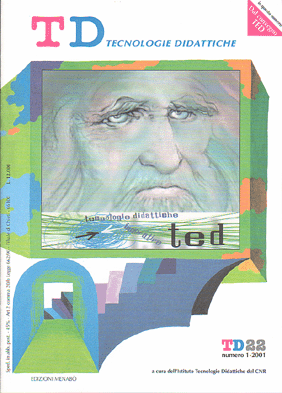New technology and curriculum innovation
Main Article Content
Abstract
Article Details
Section
Authors who publish with this journal agree to the following terms:
- Authors retain copyright and grant the journal right of first publication with the work simultaneously licensed under a Creative Commons CC BY 4.0 Attribution 4.0 International License.
- Authors are able to enter into separate, additional contractual arrangements for the non-exclusive distribution of the journal's published version of the work (e.g., post it to an institutional repository or publish it in a book), with an acknowledgement of its initial publication in this journal.
- Authors are permitted and encouraged to post their work online (e.g., in institutional repositories or on their website) prior to and during the submission process, as it can lead to productive exchanges, as well as earlier and greater citation of published work (See The Effect of Open Access)
References
Bottino R.M., Chiappini G. (1995), ARI-LAB: models, issues and strategies in the design of multiple-tools problem solving environment, Instructional Science, Vol. 23, n° 1-3, pp. 7-23.
Ciarrapico, L. (1989), Nuovi programmi di matematica per la scuola secondaria superiore, Dodicesimo convegno sull’insegnamento della matematica, Notiziario UMI, suppl. al n. 7, 3-16.
Chassapis, D. (1999), The mediation of tools in the development of formal mathematical concepts: the compass and the circle as an example, Educational Studies in Mathematics, n. 3, pp. 275-293.
Noss, R. (1995), Thematic Chapter: Computers as Commodities, in diSessa A.A., Hoyles C., Noss R. (eds), Computers and exploratory learning, Nato Asi Series F, Springer Verlag, Berlin, vol. 146, pp. 363-381.
Perkins, D.N. (1985), The fingertip effect: How informationprocessing technology changes thinking, Educational Researcher, vol. 14, n. 7, pp. 11-17.
Prodi, G. (1987), I nuovi programmi del biennio fra l’utopia e la realtà, a cura di M.A. Mariotti Undicesimo convegno sull’insegnamento della matematica, Notiziario UMI, suppl. al n.11, pp. 13-21.
Vita, V. (1987), Nuovi programmi di matematica per la scuola secondaria superiore, a cura di M.A. Mariotti, Undicesimo convegno sull’insegnamento della matematica, Notiziario UMI, suppl. al n. 11, pp. 3-12
Vygotskij, L.S. (1978), Mind in society. The Development of higher psychological processes, Harvard University Press, Cambridge, Mass.

